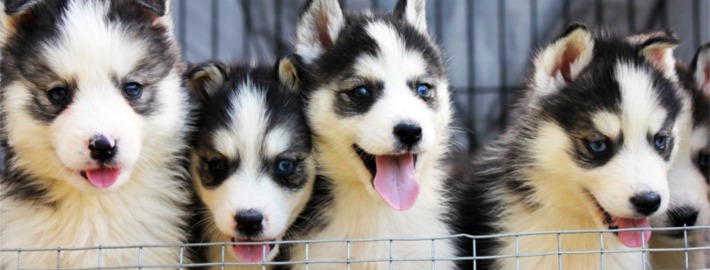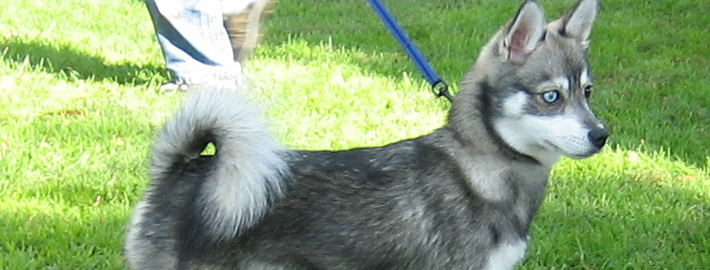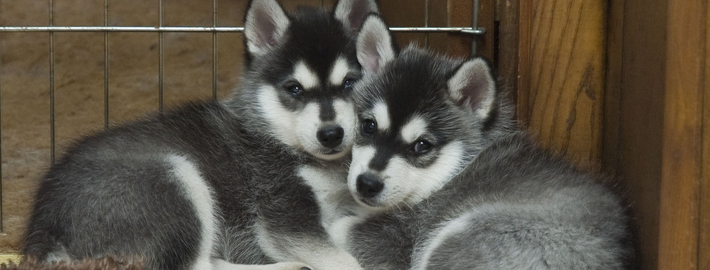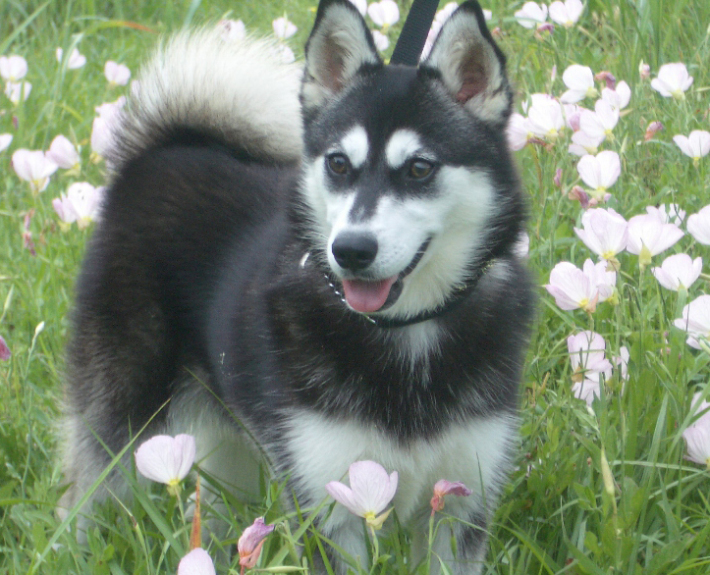What makes the Alaskan Klee Kai Unique?
Although their primary purpose is as companions, the alert Alaskan Klee Kai also makes an excellent watchdog. These lively dogs make great companions and have a tendency to glue themselves to members of their human families.
Breed Groups
Page Contents
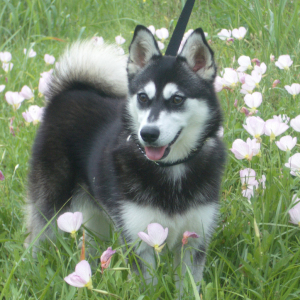
SnapShot
Is the Alaskan Klee Kai Right For You?
The Alaskan Klee Kai is a spitz type breed of dog. It is an energetic, intelligent, apartment-sized dog with an appearance that reflects its northern heritage.
Alaskan Klee Kai is known as average shedding dogs. It requires a regular and normal grooming. It must be brushed regularly. These dogs may prone to stomach issues, there is no other health issue is known. Due to their smaller size these dogs are suitable to live in an apartment. It is good to have a house at least a rather small yard. It is an intelligent breed that can learn quickly and require a firm and confident, consistent pack leader. Socialization training is recommended. It must have mental stimulation and physical activities on daily basis. The must be taken to a daily walk at least.
In 5 Words
- Energetic
- Friendly
- Socialize well
- Docile
- Very loving
Characteristics
Learn About the Alaskan Klee Kai
Description
General Description
A Spitz breed, the Alaskan Klee Kai resembles a Siberian Husky but it is much smaller in stature which makes it a good fit for apartment life. These dogs have a lively and alluring expression. They also have similar husky traits such as upright, triangular shaped ears, a curled tail, and a facial mask in contrasting colors. These dogs are somewhat longer than they are tall. They should have white teeth that meet in a scissors bite. It is preferable that Klee Kais have black noses but pink streaked black noses and liver colored ones are acceptable under certain circumstances. They should not stand over 17.5 inches tall because that is a disqualifying fault.
Size
There are three sizes of Klee Kais available. Toy dogs can weigh up to 9 pounds and be as much as 13 inches at their withers, or shoulder blades. Miniatures of this breed weigh between 10 and 15 pounds and should measure between 13 and 15 inches at the withers. Standard Klee Kais should stand between 15 to 17 inches high and weigh somewhere between 16 and 22 pounds.
Coat
Alaskan Klee Kais have a thick double coat, which sheds in moderate amounts. The undercoat is soft and short while the outer coat is much longer. This helps protect them from the winter temperature extremes that are commonly found in parts of Alaska.
They come in three official color variations: black and white, gray and white, or red and white. The ‘red’ hues may range from cinnamon shades to dark auburn in color. While there are solid white Alaskan Klee Kais in existence, the coat variation is considered a disqualifier by the breed standards. These dogs can be registered with the United Kennel Club, but cannot be shown in the show ring.
These dogs additionally come in full coated and standard varieties. Both types equally acceptable as far as breed standards and the United Kennel Club are concerned. However, owners that plan on showing their dogs should note that the breed standards state that the coat length cannot obscure the dog’s outline or it may count as a breed fault.
Short History of the Alaskan Klee Kai
The Alaskan Klee Kai was developed in the 1970s from the Alaskan and Siberian Husky as well as the American Eskimo breeds. The Klee Kai was initially the result of an accidental breeding between an unknown small dog and an Alaskan Husky. This mix caught the attention of Linda S. Spurlin, who in turn created the breed that is in existence today. She used a mixture of Siberian and Alaskan Huskies as well as Schipperke and American Eskimo Dogs to keep the Klee Kais smaller in stature. Ms. Spurlin privately bred these dogs until the late 1980s. Though there was a breed split in 1995, the two divisions have since been reunited under the Alaskan Klee Kai name in 2002. The American Rare Breed Association recognized the Klee Kai breed in 1995 and, two years later, they were also given United Kennel Club recognition as well. In 2008, the dogs were listed as a Consumer Reports favorite.
Temperament
These docile and loving dogs make wonderful companions. As a rule, Klee Kais tend to be very friendly but they also are a bit reserved around unfamiliar people. Therefore, it is a good idea to make sure these dogs are properly socialized from a young age. Klee Kais have high energy levels and tendency to bark so prospective owners should take those facts into consideration. If they are not given appropriate amounts of mental and physical exercise, these dogs may also become high strung and neurotic. These dogs can spend time outdoors even in very cold weather but should not be left outside permanently. It is a good idea to add a dog door to the outside so that these dogs can come and go as they see fit.They are happiest when they are with their human families.
Caring for Your Alaskan Klee Kai
General Health
When compared to other breeds, the Alaskan Klee Kai seems to be reasonably free of genetic defects. Yet, as with any breed, there are some health conditions that can appear from time to time. Juvenile cataracts, liver disease, factor VII deficiency, pyometra, luxating patella, cryptorchidism, thyroid diseases, cardiac issues, and tricky stomachs have all been known to occur in Alaskan Klee Kais. Extreme shyness is a breed fault that appears occasionally but it doesn’t have any effect on a dog’s ability to be a loving pet. Due to the breed’s recent creation and small gene pool, other health issues that may eventually affect these dogs have yet to be discovered. It is a good idea for owners to have their Klee Kai dogs health tested for cardiac, thyroid and patella problems, especially if they plan on breeding them.
Care
Daily
These dogs should be taken on long daily walks.
Weekly
Alaskan Klee Kais will need to be brushed several times a week, due to the fact that they have a thick double coat. Those with lengthy fur especially benefit from being combed on a regular basis. Cleaning their teeth on a regular basis is also recommended, as this will help prevent bad breath and the onset of periodontal disease.
Monthly
As with any other breed, these dogs require regular flea, heartworm, and tick prevention medications. These treatments are usually administered on a monthly basis.
Grooming & Bathing
For the most part, Klee Kais keep themselves clean in the same manner that a cat would. A dog that been playing in the mud or one that has encountered a skunk might require a wash but otherwise doing so is unnecessary.
Exercise & Training
Being suspicious by nature, Alaskan Klee Kais should be exposed to many different people from a young age to prevent them from becoming exceptionally fearful of strangers later on in life. These dogs benefit greatly from being trained by a firm, consistent leader. However, this breed is intelligent and learns quickly.
Click here to add your own text
IconBox Title
Click here to add your own text
IconBox Title
Click here to add your own text

